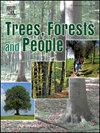Natural colonization in abandoned agricultural fields benefits native, insect-pollinated and bird-dispersed woody species
IF 2.7
Q1 FORESTRY
引用次数: 0
Abstract
Forests play a crucial role in countering the climate and biodiversity crisis. Increasing forest cover is proposed as one of the most cost-effective tools to mitigate climate change, but the effects of afforestation methods on biodiversity are unclear. The abandonment of farmland for natural colonization has emerged as a resource-efficient approach, though the pace and predictability of colonization raise questions about its contribution to enhancing biodiversity in emerging forests. We analyzed tree and shrub species richness and composition in 31 natural colonization areas on agricultural land abandoned between 1990 and 2018 in Denmark and compared them with forest plantations of similar ages registered in the National Forest Inventory (NFI). As proxies for overall biodiversity, we compared the dominance and distribution of native, insect-pollinated, and bird-dispersed species. Although overall woody-species richness in plantations was higher than in natural colonization, the share of native, bird-dispersed, and insect-pollinated species was higher in natural colonization sites. Notably, approximately 70 % of the native woody species registered in Danish NFI were identified in the 31 natural colonization sites. Species richness in natural colonization areas was markedly higher on loamy than sandy soils, whereas in plantations, the number of species was similar between the two soil types. Furthermore, comparing different soil types, woody species composition was more similar in plantations than in natural colonization. These results demonstrate that afforestation with natural colonization favors native woody species and species associated with higher biodiversity, especially in loamy soils.

求助全文
约1分钟内获得全文
求助全文
来源期刊

Trees, Forests and People
Economics, Econometrics and Finance-Economics, Econometrics and Finance (miscellaneous)
CiteScore
4.30
自引率
7.40%
发文量
172
审稿时长
56 days
 求助内容:
求助内容: 应助结果提醒方式:
应助结果提醒方式:


